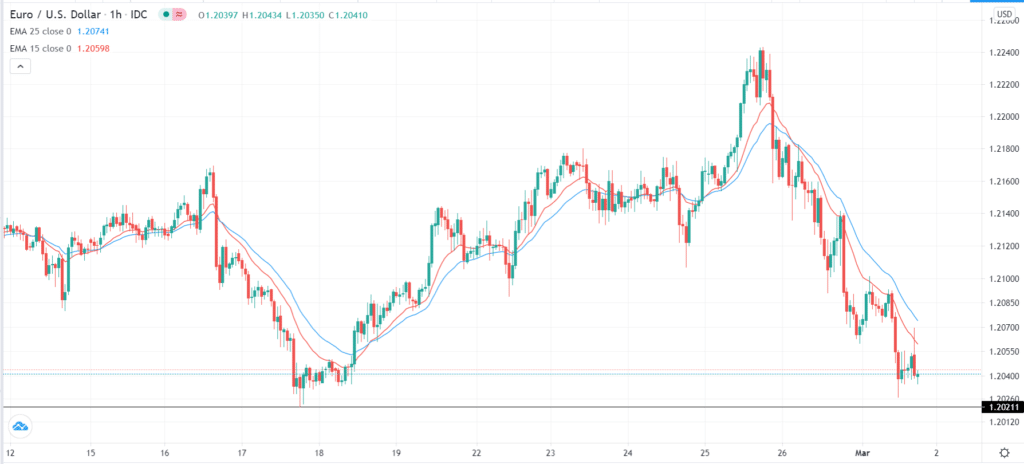The EUR/USD pair declined sharply on Monday after the slight decline of the US Treasury yields today. It declined to an intraday low of 1.203, which is the lowest it has been since February 18.
Stronger dollar
The EUR/USD fell mostly because of the strong US dollar. The closely-watched dollar index rose by 0.10% on Monday. It rose by 0.60% against the Swiss franc, 0.20% against the euro, and 0.10% against the Japanese yen.
This price action happened after the benchmark ten-year Treasury yield declined after rising to the highest level this year last week. It dropped to 1.434%, which is substantially lower than last week’s high of near 1.6%. The five-year dropped to 0.70%, while the 30-year yield rose to 2.20%.
In the past few weeks, the performance of the bond market has pushed many investors to worry about high inflation and the potential for high-interest rates and quantitative easing. This is because of the recently passed $1.9 trillion stimulus package in the House of Representatives. The bill will now be debated in the Senate and passed in the next few weeks.
The package includes billions of dollars to individuals through $1,400 stimulus checks. It will also allocate funds to states and local governments, vaccine distribution, and enhance unemployment benefits.
Robust manufacturing sector
The EUR/USD declined even after Markit published the relatively strong manufacturing PMI data from Europe and the US. In a report, the research firm said that the overall manufacturing PMI increased from 54.8 to 57.9. Economists polled by Bloomberg were expecting the PMI to rise to 57.7.
Manufacturing grew in all countries in the region. In Germany, it rose to 60.7 while in France and Italy, it rose to 56.1 and 56.9, respectively. This growth was mostly because of long delivery times and high internal and external demand.
In the United States, data by Markit showed that the manufacturing PMI declined from 59.2 to 58.6. This decline was better than the expected 58.5. Further data by the Institute of Supply Management (ISM) revealed that the PMI increased to 58.8.
Inflation is also rising in Europe. According to Destatis, the German consumer price index increased by 0.7% in February, leading to an annualized increase of 1.3%. The harmonized consumer price index data rose by 0.6% and annualized rate by 1.6%. This performance was because the government has started to remove some of the support measures it implemented last year.
Later this week, the EUR/USD will react to the ongoing debate on stimulus and the US nonfarm payroll numbers that will come out on Friday this week. Economists believe that the US economy added more jobs in February than in January. They also expect the overall unemployment rate to drop to 6.3%.
EUR/USD technical outlook
The EUR/USD pair declined to an intraday low of 1.2027. On the hourly chart, this price is slightly above the important support of 1.2020, which was the lowest level on February 17. The price has also formed what seems like an inverted cup and handle pattern. Further, it is still below the 15-day and 28-day weighted moving averages. Therefore, in the near term, the pair may experience a short-term pullback and then break out lower.








